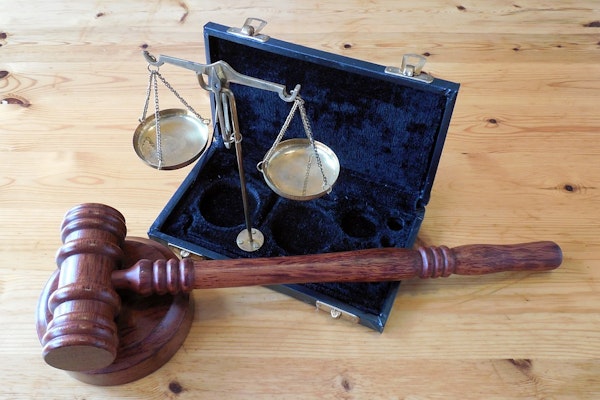
California Raises FAIR Plan Coverage Limits to Address Insurance Gaps in Wildfire Zones
California has more than doubled commercial coverage limits under its FAIR Plan, offering relief to property owners amid insurer withdrawals and increasing wildfire threats.
March 31
Catastrophe
Insurance Industry
Legislation & Regulation
Property
California

More U.S. Workers Report Burnout as Hiring Delays and Heavy Workloads Persist
A new Robert Half survey finds 36% of U.S. professionals feel burned out, with workload, lack of recognition, and limited growth opportunities driving the trend.
March 31
Education & Training
Insurance Industry
Risk Management
Workers' Compensation

Texas Adjuster Admits to Multi-Million Dollar Insurance Fraud Targeting Georgia Church
A Texas public adjuster already serving time for insurance fraud in Louisiana and Texas has pleaded guilty to defrauding a Georgia church and its insurer after Hurricane Michael.
March 31
Catastrophe
Fraud
Legislation & Regulation
Property
Georgia

State Farm Defeats Class Action Claim Over Xactimate Estimates in Pennsylvania
A Pennsylvania federal judge ruled that State Farm did not breach policy terms or act in bad faith by using its preferred loss estimation method, dismissing the homeowners’ lawsuit.
March 27
Insurance Industry
Litigation
Property
Technology
California
Indiana
Pennsylvania

Break the Doom Loop by Shifting from Conflict to Curiosity in Claims
Litigators and claims professionals can avoid prolonged disputes by shifting from adversarial thinking to a curious, problem-solving mindset focused on resolution.
March 27
Education & Training
Insurance Industry
Litigation
Risk Management

Why Homeowners Aren’t Buying Personal Cyber Insurance Despite Growing Risks
Despite rising cyber threats in connected homes, consumer adoption of personal cyber insurance remains low due to knowledge gaps, communication issues, and pricing concerns.
March 26
Education & Training
Property
Risk Management
Technology

Oregon Court Overturns Six-Figure Contingency Fee in Hartford Insurance Case
An Oregon appellate court has ruled against awarding attorney fees based on a percentage of recovery in an insurance settlement, emphasizing the importance of hourly rates.
March 25
Insurance Industry
Legislation & Regulation
Litigation
Property
Oregon

Segway E-Scooter Recall: Folding Mechanism Hazard Risks Rider Injury
A major recall of Segway e-scooters due to a faulty folding mechanism poses significant injury risks to riders. Learn how this impacts potential liability and claims.
March 25
Insurance Industry
Liability
Risk Management
Salvage
California

Weather Balloon Cuts Threaten Forecast Accuracy Amid Severe Season
National Weather Service balloon launch reductions, blamed on Department of Government Efficiency (DOGE) staff cuts, threaten forecast accuracy during severe weather season, raising concerns for claims adjusters.
March 25
Catastrophe
Insurance Industry
Legislation & Regulation
Risk Management
Technology
Colorado
Maine
Nebraska
New York
South Dakota

Gen Z’s Mortgage Risk: Climate Change & Insurance Costs
Rising insurance premiums and climate-related disasters are forcing Gen Z to scrutinize weather patterns before buying homes, reshaping the American Dream.
March 25
Catastrophe
Insurance Industry
Property
Risk Management
Technology
Florida
Texas

Millions of Homes Across the US Remain Uninsured Despite Growing Disaster Risks
A LendingTree study reveals that over 11 million U.S. homes lack insurance coverage, with the highest rates in disaster-prone states and metros, leaving homeowners financially exposed.
March 24
Catastrophe
Insurance Industry
Property
Risk Management

Texas Measles Outbreak Raises Alarms Nationwide as Infections Cross State Lines
Texas’ largest measles outbreak in decades has spread to New Mexico and Oklahoma, with experts warning it could become a national crisis without swift vaccination efforts.
March 24
Education & Training
Legislation & Regulation
Life & Health
Risk Management
Illinois
New Mexico
New York
Oklahoma
Texas

How Lithium-Ion Batteries Amplify Risk During Natural Disasters
Lithium-ion batteries pose increasing fire and environmental risks during natural disasters, prompting insurers, governments, and consumers to rethink safety and response strategies.
March 24
Catastrophe
Property
Risk Management
Technology
California
Florida

Construction Industry Faces Rising Insurance Risks Amid Data Center Boom and Labor Shortages
Global demand for data centers is driving construction growth, but rising costs, labor shortages, and climate risks are reshaping insurance pricing and underwriting strategies.
March 24
Catastrophe
Property
Risk Management
Technology
California

Root Insurance Pays $975K to Settle Data Breach That Exposed Driver’s License Info of Thousands in New York
New York AG Letitia James secured $975,000 from Root Insurance after a website vulnerability allowed hackers to steal over 44,000 New Yorkers’ driver’s license numbers.
March 24
Auto
Litigation
Risk Management
Technology
New York
Ohio





